Review for Kids On The Slope Collection
Introduction
I get a care package from MVM once a month, a jiffy full of silver discs with anime on, all for the price of a few hours of my time, and my thoughts condensed into a few thousand words. Once in a while I have to pay the price of sitting through Samurai Deeper Kyo, although thankfully that’s a rare occurrence. It’s the way of things that I have to prioritise review discs over my own purchases, and I even have a pile of discs that I have shelled out for, and have every intention of reviewing as well. At this moment in time, that pile is about four feet high... Last month’s parcel from MVM was no different; an eclectic collection of anime on DVD, and in that package was one Kids on the Slope. I put those DVDs to one side, pulled out my wallet, blew the dust off, and bought the Blu-ray of Kids on the Slope instead, also out from MVM. It also went straight to the head of the ‘purchased discs that I intend to review’ pile, leapfrogging some Blu-rays that have been languishing there for over two years, and a couple of DVDs that have been looking balefully at me for as many as ten... That’s a tungsten solid recommendation for you right there, although I suppose you want to read about the show itself.
Two names for you then, director Shinichiro Watanabe and composer Yoko Kanno, who reunited to work on Kids on the Slope. In case you have a little trouble placing them, the last time they collaborated was back in 1998, on an obscure anime series called Cowboy Bebop. You know, that Cowboy Bebop that just happened to explode the anime industry into the consciousness of Western fans and made it the relentless juggernaut that it still is today. Shinichiro Watanabe isn’t all that prolific, but with the sci-fi-space bounty hunter road trip series set to an eclectic jazz soundtrack on his resume, he doesn’t need to be. But he has also made an impact in the West with Samurai Champloo, an Edo era Samurai road trip series set to an eclectic hip-hop soundtrack, and look out for the forthcoming (in the US) Michiko and Hatchin, on which he was the music producer, a contemporary road trip series about an escaped convict and a young girl in South America, set to an eclectic Latin soundtrack...
Yoko Kanno is a little more prolific, and she’s a name with a lot of pull for anime fans, who fall in love with her brilliant, and varied musical compositions (yes, eclectic is an appropriate word here too). Just think of the pedigree of The Vision of Escaflowne, Macross Plus, Wolf’s Rain, Darker than Black, and of course Ghost in the Shell Stand Alone Complex. You can understand why all it took was the announcement that Yoko Kanno and Shinichiro Watanabe would be working together again, for most fans to be sold then and there. It wouldn’t even have mattered if the show was Cowboy Bebop redux, but Kids on the Slope is something completely different, a period drama set in Japan of the 1960s, telling the story of three unlikely friends, high school kids who come together over a mutual love of jazz music.
Kaoru Nishimi is a somewhat isolated and introverted teenager, which is no surprise given his father’s peripatetic occupation, and the fact that he’s always winding up as the new kid in school, never staying long enough to make friends. As he starts high school, he’s finally settled down; or rather he’s moved in with his uncle’s family in Kyushu. He doesn’t feel as if there’s much point in making an effort in class though, he’s already being looked at as the ‘rich kid’, and the thought of fitting in to a new school, where everyone has a different accent and thinks of him as an outsider merely serves to bring on an anxiety attack. His usual prescription is to escape to the isolation and openness of the school roof, but this time standing in his way is the class delinquent, Sentaro Kawabuchi.
At first it looks like he’s picked the worst person to tangle with, but then he hears Sentaro drumming away with a pair of improvised drumsticks, finding a jazz beat on a convenient surface. Kaoru plays piano, although he’s been classically trained. The freedom of jazz is inspiring. Then he meets the class representative, Ritsuko Mukae, who just happens to be Sentaro’s childhood friend. Her father owns a record store, the basement of which houses a practice room, where like minded musicians come together to jam. The promise of sweet music should herald the start of a perfect friendship, but real life is never that accommodating.
Twelve episodes of Kids on the Slope plus extras are presented across two Blu-ray discs.
Disc 1
1. Moanin’
2. Summertime
3. Someday My Prince Will Come
4. But Not For Me
5. Lullaby of Birdland
6. You Don’t Know What Love Is
7. Now’s The Time
8. These Foolish Things
9. Love Me or Leave Me
Disc 2
10. In a Sentimental Mood
11. Left Alone
12. All Blues
Picture
Kids on the Slope gets a 1.78:1 widescreen transfer at the 1080p resolution. The image is clear and sharp throughout, the progressive animation is impressive, and the show’s stylised colour palette comes across without flaw. This isn’t your traditional anime series, and the character designs are more realistic and nuanced. The eyes are more reasonably proportioned, and the wider lips make the characters look more like Natsume Ono creations. The colours are gentler, tending towards the warmer, pastel shades, while skin tones are gradual and dimensioned. The show captures the sixties setting well, both in the world design, and the costume designs. You will see turtlenecks, and you will see thick striped shirts and cloth caps. The animation is stupendous, especially for the music sequences, where they’ve accurately captured real musicians at work and used that as a key to create the character animations. Watch Kaoru at the piano, or Sentaro at the drums, and you have to wonder if it would have been cheaper to make the series in live action. The trade-off is that on occasion, the character designs, particularly the supporting characters, do drift off model.
This Blu-ray looks amazing though, with the added clarity and detail coming across well, with also the nuanced colour design as well as a distinct layer of grain to give the show more of a period feel.
The only niggles might be a bit of digital banding around light sources in darker scenes, and a momentary failure of QA in episode 9. For one frame 2:23 into the episode there is bit of minor pixellation that distorts Kaoru’s face. Then for another frame at the end, 21:01 as the screen pans up over a night sky, the whole screen pixellates. Two frames out of 5 hours of animation isn’t really a lot, but when it’s a Blu-ray title that I have awaited with as much eagerness as this one, it still manages to give a sinking feeling.
Sound
The actual QA panic ought to have been here, as after Sentai Filmworks released the show in the US, it was discovered that episode 11 had just one channel of audio in the Japanese track. After a couple of PR stumbles Sentai instituted a disc replacement scheme. In Australia where Hanabee were releasing the discs co-authored with Sentai, they got caught out as well. MVM struck it lucky in this respect, as the glitch was discovered before they received their stock. All of the Kids on the Slope Blu-rays in the UK will have the correct Japanese audio.
Kids on the Slope gets DTS-HD MA 2.0 Stereo audio tracks in English and Japanese, with optional translated subtitles and a signs only track. The subtitles look to be adapted from the same script that Crunchyroll used, suit the show well, and are accurately timed and free of error. The Japanese with subtitles is the way to go here, as there is whole lot of emphasis on character, drama, and indeed dialect here, and the original voice cast deliver impeccable and moving performances.
As for the English dub, it makes you wish that this was a subtitle only Japanese release. I haven’t heard a dub this bad in years. Sentai have established a reputation of catering to the fans’ need to have the best anime as soon as possible, and are bringing down delays which once used to be two years, to as little as six months after the original Japanese TV broadcasts. The downside to this is, that this doesn’t give a lot of time to work on and finesse an English dub, and a lot of Sentai releases have perfunctory dubs, with average performances, and scripts that lack sparkle.
Kids on the Slope goes one step beyond that haste to actual awfulness. Characters are wholly miscast, especially Sentaro, who now sounds like a 40-year-old teenager, and the use of Japanese honorifics in the English dub is misplaced and jarring. Worse, it often looks like the characters are just reading out the subtitle script, with no effort to actually fit the mouth flaps. When the songs appear, they remain in Japanese, although given the quality of the dub, that’s probably for the best. Kids on the Slope is a premium title, a quality anime with some serious pedigree behind it. Cowboy Bebop even after all this time has one of the best dubs in anime, and Kids on the Slope should have had the time, and attention that would have brought it up to that level.
Thankfully the original Japanese audio is unmarred here, and you can appreciate that wonderful jazz music in all its lossless and un-PAL-sped-up glory here. Yoko Kanno’s music is sublime, and you will most likely be hunting for a soundtrack CD as soon as you get through the episodes. On top of that, it may just open you to a whole new genre of music as well. In that respect, Kids on the Slope may just be the most expensive anime release you buy, but it will be more than worth it.
Extras
Two discs are presented in an Amaray style case, with one disc held on a central hinged panel. The artwork on the front is simple but effective, with the rear offering screen caps and disc blurb. The sleeve is two sided, with the inside offering an episode listing against some more character art.
Kids on the Slope’s Blu-ray discs kick off with Hanabee logos, (the only MVM logos are on the physical packaging), although apparently if you put these discs in a Region A player, you’ll get the Sentai logo instead. The menus load quickly and are wholly static.
All of the extras are on disc 2, with the standard textless credit sequences at the head of the list. You also get the Japanese previews for the show, a collection of commercials for the broadcasts and the Blu-rays that run to a total of 3 minutes.
Of more use are the Interviews, with director Shinichiro Watanabe (16 minutes), Yoko Kanno (22 minutes), and musicians Takashi Matsunaga and Shun Ishikawa (13½ minutes). It’s great to see how the show came about, and hearing Yoko Kanno speak on how she creates the music is always fascinating. Surprisingly of greatest interest for me was the interview with the two musicians. They not only performed the music for the show, but they were filmed to provide reference images and video for the characters of Sentaro and Kaoru. They were in essence acting the roles just as much as the voice actors, and are a significant reason why the music sequences in the show look so authentic.
Conclusion
With its creative pedigree, I was predisposed to liking Kids on the Slope in the first place, and when I watched it on Crunchyroll, one of the few times I actually made the time to watch a show as simulcast, rather than leaving it for a belated marathon, it was no surprise that I loved every minute of it. However it has happened with me before that the shine has come off a show the second time around, especially when comparing internet streaming to home video releases. I needn’t have worried though, as watching Kids on the Slope on Blu-ray is an even more enjoyable experience.
I’ve often seen shows like this described as slice of life shows, which is something of a catchall descriptor designed for shows that don’t fit neatly into the usual anime categories. They are shows that capture a group of characters at a certain point in their lives, and just appear to follow them in their every day existences. I’ve even been guilty of using that categorisation myself, but watching Kids on the Slope reveals that it is far from frivolous and disposable as the usual slice of life story. It’s far more appropriate to label this as a coming of age drama, as there is a far greater character narrative being developed here, and its story certainly isn’t frivolous or disposable. The surprise is that it wasn’t made as live action, as its material is perfectly suited to that medium.
The show follows a central trio of friends that come together through a shared love of jazz music, all though the three years of high school. Kaoru Nishimi is a newcomer to jazz, having been brought up playing classical piano. Because of his father’s job, he never settled in one place for long, which has made him introverted and uncommunicative, as well as distrustful of others and prone to anxiety attacks. Sentaro Kawabuchi on the other hand is an outgoing and likeable jazz drummer, except for the fact that he’s also something of a delinquent, prone to picking fights, and isolated in class because of that. He does have one friend from childhood though, the class representative Ritsuko Mukae, and the pretty Ritsuko catches the eye of Kaoru as well. Ritsuko’s father owns a record show, the basement of which is where Sentaro practices, and soon Kaoru is there as well, learning about jazz.
In the ideal world, it would all be sweet music, but 1960s Japan is anything but ideal. Naturally there are the usual problems that teenagers face, beginning with love of course, and in a triangle consisting of the three friends, it’s almost inevitable that Kaoru may be attracted to Ritsuko, but she’s sweet on Sentaro, while Sentaro’s wholly oblivious, and actually has his eyes on another girl, Yurika. That Yurika initially shows some interest in him, but is then smitten by college student and trumpet player Junichi only serves to complicate matters. It doesn’t help that they have the communications skills of typical teenagers, and crossed signals and miscommunications abound. Kaoru’s outward maturity masks a naivety and inexperience at socialising. Sentaro is practically his first friend, and he becomes somewhat childishly possessive of that friendship. When the British invasion happens, and Beatlemania strikes, the school naturally throws up some fans of pop music. When a would-be pop star asks Sentaro to play drums for his band, Kaoru doesn’t take it all that well.
Beneath these lighter issues are some more weighty matters, as Kids on the Slope captures more than just the surface of the era. Permissiveness and propriety were in confrontation in the sixties, and coming from a broken home, his mother having walked out on the family when he was just a child weighs on Kaoru. These problems are doubled for Sentaro, who faces prejudice from his peers and his own family because of his mixed origins. On top of that Ritsuko and Sentaro are Christians in a predominantly Buddhist nation. Meanwhile Junichi gets caught up in political activism and demonstrations while he’s at college, and makes some questionable decisions. Kids on the Slope so convincingly captures the mood and essence of the era that it is wholly compelling.
It’s a study of society in microcosm, as seen through the eyes of its three protagonists. They face isolation, prejudice and a lack of communication, yet it is jazz music that breaks these barriers down. Sentaro and Kaoru may have a hard time getting their feelings across verbally, but put them in a room together with a drum kit and a piano and they can sort out all of their differences. It’s no surprise that these key moments in the show are so thrilling, so enchanting. The music is absolutely sublime for one, while the animation is so realistic and authentic that you just listen and watch, mesmerised. Best of all is that it so perfectly conveys the emotions of the characters in that scene that you’re lifted by the experience.
If there is a criticism, it would be about the pace of the show, which is breakneck fast. Three years of story pass by in just 12 episodes, eleven and a half really as the final half of episode 12 is the epilogue to the story. That Kids on the Slope manages this while drawing us into the story, and fully developing its characters is laudable, and that makes it more of a personal wish than a complaint that the show should be longer. I want it to be longer to enjoy more of the characters. I want it to be longer to have more of the great music in the show. I want it to be longer to appreciate the great animation more. Given the quality of the animation that we do get, and the great music, I can fully understand why the creators distil the show and maximise their efforts into just 12 episodes, as stretching it beyond that would just dilute their efforts and weaken the final results.
Kids on the Slope is the best anime show I have seen in years, which makes it all the more disappointing that it gets one of the worst English dubs I have heard in years. Sentai Filmworks really should hang their heads in shame over this one. Thankfully the Japanese audio is there, and you can’t diminish the quality of the music in either version. Because it is such a music centred show, I’d say that Blu-ray is essential for this one. That the image quality is improved goes without saying, but lossless audio, unaffected by the pitch alteration forced by 4% PAL speedup is the only way to take in this anime. Pure gold!
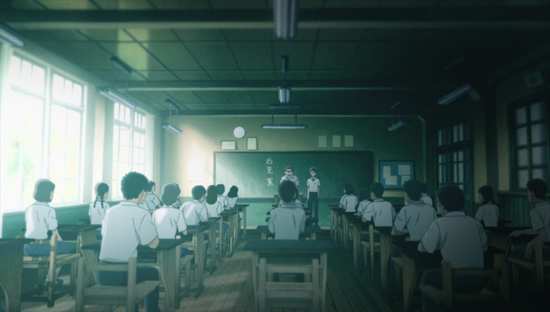
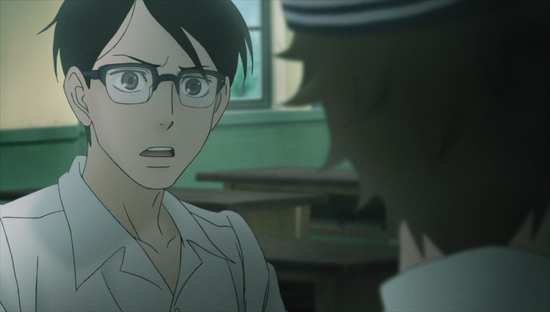
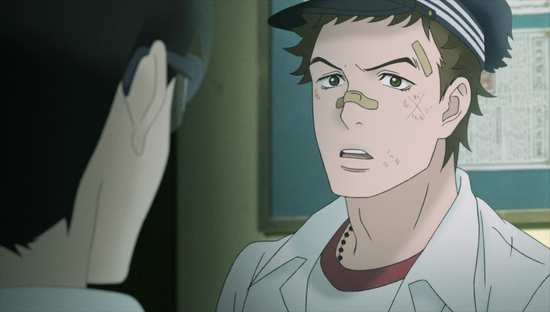
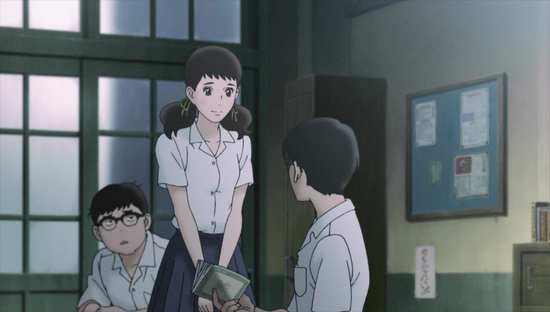
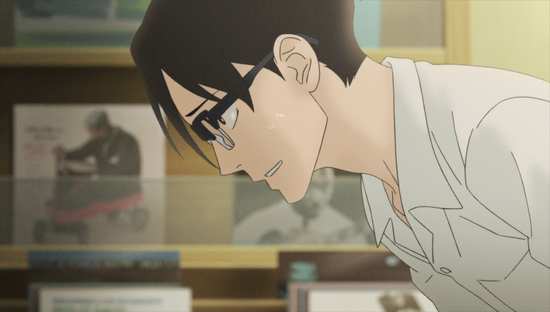


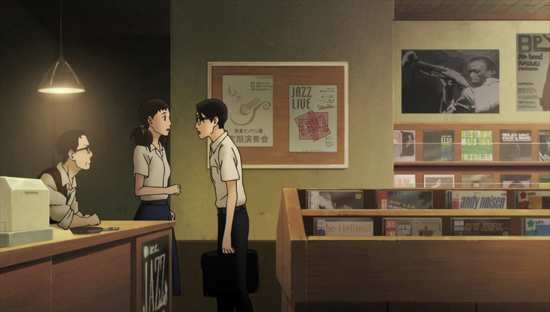
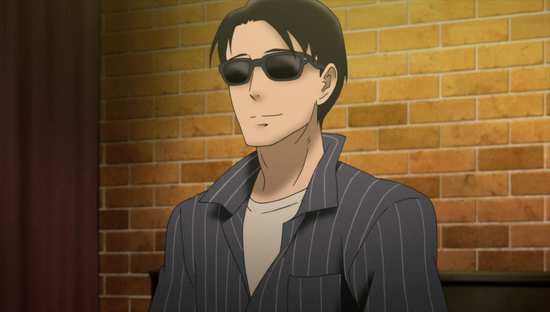
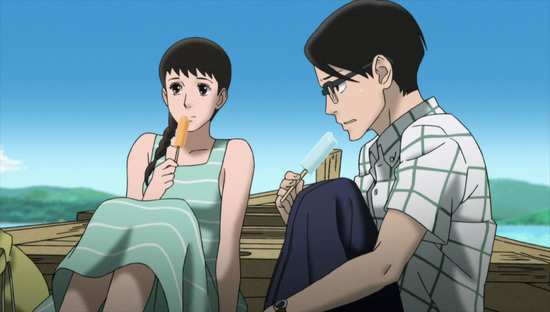
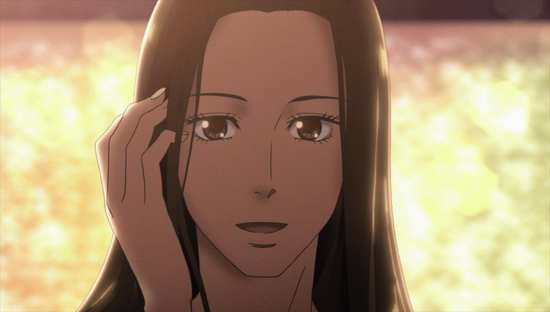
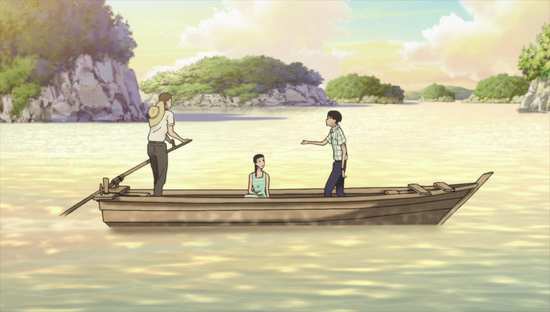
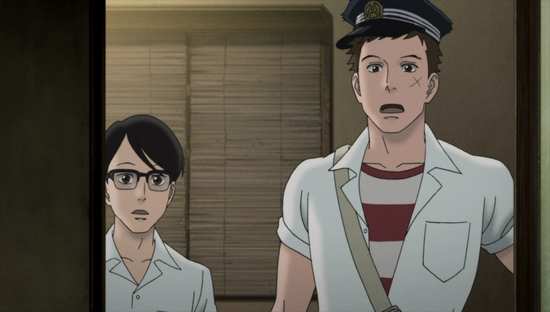
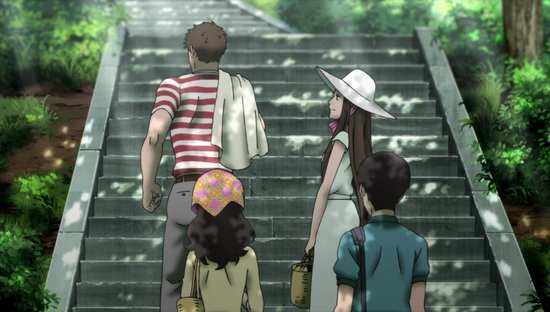
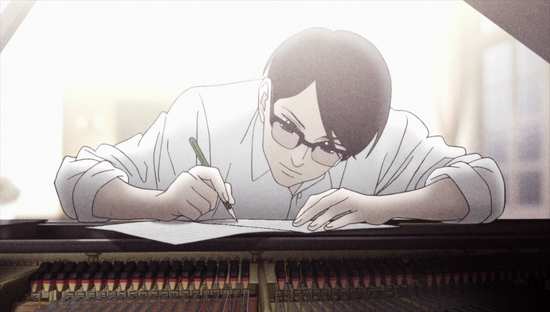
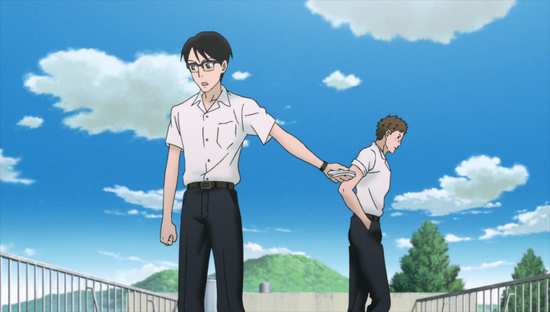
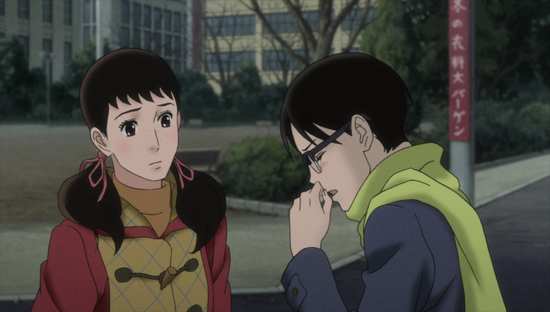
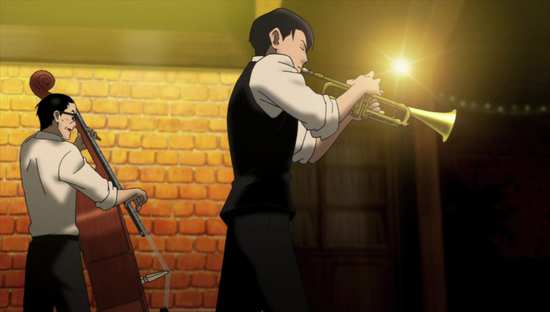
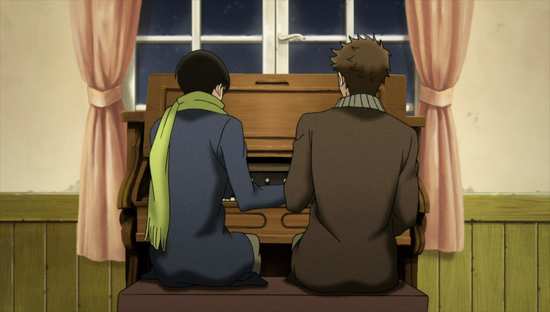
Your Opinions and Comments
Be the first to post a comment!